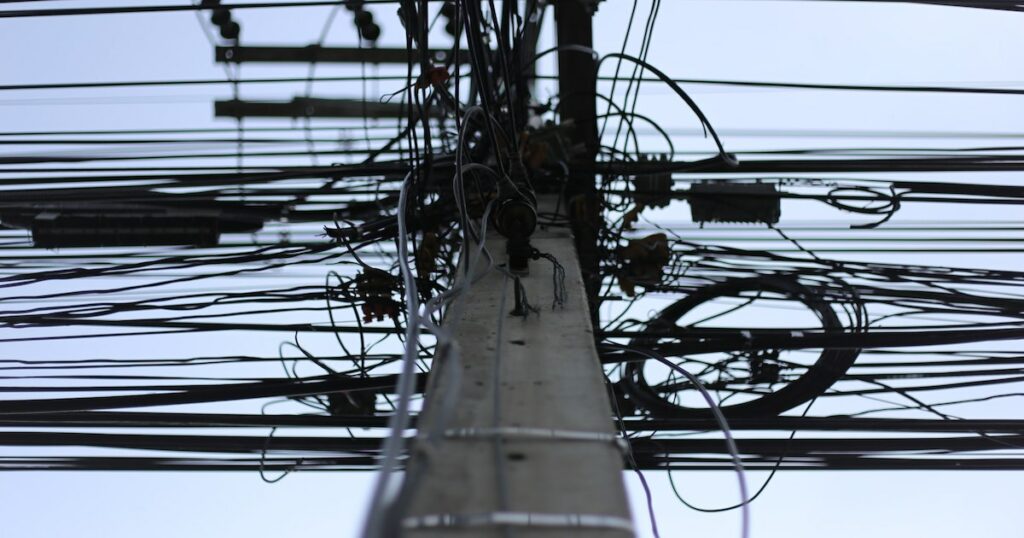God is near. God is “very present” (Psalm 46:1). God is sitting in the driver’s seat of creation.
This is what Lutherans believe. Martin Chemnitz, a sixteenth century Lutheran theologian, declared, “God is not absent or far away but close at hand and present, that He fills heaven and earth with His being, His providence, His power, His creative and preserving ability, and His unique rule.”[1]
Not all people agree with Lutherans on this matter.
For example, a philosophy known as deism conceives of God as a distant designer. According to deism, God made the world and then stepped away from it so it could function autonomously. In the absence of a divine driver, deism asserts that this world is on its own. Voltaire, a French writer during the Enlightenment, summarized the deistic view of a far-away God: “When his highness sends a ship to Egypt, does he trouble his head whether the rats in the vessel are at their ease or not?”[2]
However, this world is not autonomous. Scripture makes it clear that God has not vacated the vessel of His creation. To the contrary, God is so deeply troubled about our well-being that He sent Christ Jesus into the world to redeem it: “And the Word became flesh and dwelt among us, and we have seen his glory, glory as of the only Son from the Father, full of grace and truth” (John 1:14). God is the designer and driver of this world. And, in Christ Jesus, God has delivered this world from death to life.
Autonomous vehicles: who is in the driver’s seat?
Autonomous vehicles (AV) elicit feelings of both thrill and terror. It sounds thrilling to order up a driverless vehicle on your smartphone, step inside the car, get comfortable and arrive at your destination without ever having to drive. It also sounds terrifying to entrust your life and safety to a piece of technology propelling you down the highway at 70 mph while you frantically search for a brake pedal or steering wheel.
The impending thrill and terror of driverless cars has been in the works for a long time. Leonardo DaVinci, in the 1500s, created designs for a self-propelled cart that used high tension springs to move on its own and had steering that could be set in advance. Robert Whitehead, an English engineer in the 1800s, devised a self-propelled and self-guided torpedo. Inventors in the early 1900s developed autopilot systems for airplanes and cars, while later inventors came up with driverless cars for exploration in outer space.
Drawing on this long history of innovation, modern AV is poised to make some massive leaps in the near future. The Society of Automotive Engineers has proposed five different levels of vehicle autonomy. Level 1 is basic driver assistance such as cruise control; this technology requires the driver to have hands on the steering wheel. Level 2 is when the vehicle can perform more complex maneuvers such as steering or parking on its own; this allows a driver to occasionally take hands off the steering wheel. Level 3 means that the car can perform many tasks on its own such as passing a slower vehicle; at this level, the driver is able to take eyes off the road and is only needed in emergency situations. All three of these levels have already been achieved by various car manufacturers.
The remaining levels of vehicle autonomy are in the works, but not a complete reality yet. Level 4 is when the vehicle has such a high level of automation that the driver could fall asleep without any consequence. Finally, Level 5 autonomy means that there is no steering wheel or brake pedal in the vehicle. This would be a fully autonomous vehicle that can travel on any road and in any condition.
When will these highly autonomous and fully autonomous vehicles hit the road? It may be sooner than you would think. Waymo, a subsidiary of Google, has offered Waymo One, a self-driving taxi service in the Phoenix area, for over a year. While these vehicles are self-driving, they also include a human safety operator as the company continues to test the new technology. Also, highly and fully autonomous vehicles are likely to hit the road in commercial settings within very limited areas such as job sites and manufacturing plants (known as “geofencing”).
However, companies such as Tesla have repeatedly failed to deliver on promises about when this technology will be available to consumers. So, hold on to your keys for a little while longer.
Ripple effects and moral dilemmas
New technology has a ripple effect. It alters its immediate context, and it alters many other broader contexts as well.
AV technology will have a massive ripple effect on transportation as it is introduced. It will likely reshape the concept of automobile ownership; fewer people will own cars but will instead rent cars as needed. This will also affect insurance and liability.
AV technology will ripple out in other ways as well. For example, parking needs and space will change as a result of this emerging technology. Most cars (around 90–95 percent of them) spend the majority of their time sitting around in a parking space. Self-driving cars would be used almost continuously. Large swaths of land presently used for parking could be repurposed. In turn, this could impact property values and city planning.
There could be several beneficial ripple effects from this technology as well. The ability to read a book or sleep while commuting to work is really only a minor upside to AV. While it is still a long way off, AV will likely end up being significantly safer than human drivers; the awareness and reaction speed of sensors and computers is significantly faster than human brains, hands and feet. Many of these vehicles will run on electricity and be more fuel efficient than human drivers. Also, traffic congestion could be decreased as autonomous cars communicate with one another to optimize routes.
The ripple effects of this new technology could become troubled waters, though. For example, one of the biggest moral dilemmas surrounding AV technology is the matter of decision-making. A driver in the driver’s seat of a car is forced to make many different decisions: How much room do I give this bicyclist? If a person suddenly appears in the middle of the road, what do I do? If this light turns yellow, do I go through it or do I stop? Presently, human drivers make these decisions.
However, in a driverless car, someone else makes these decisions ahead of time. Rather than the driver making the decision in the moment, an engineer, computer programmer or company is making these decisions on behalf of others. While this may not seem problematic at first, it can get messy fast.
The Trolley Car dilemma gets at this issue. Suppose there is a runaway trolley car. You are standing off at a distance in the train yard next to a control lever that allows the car to change to a different set of tracks. As you watch this trolley racing down the tracks, you notice that it is heading toward a group of people sitting on the tracks. However, if you pull the lever, it will change directions and hit just one person sitting on a different set of tracks. Your choices are: Do nothing and let it kill a group of people, or actively pull the lever and kill one person.
AV technology could make this dilemma a reality. If a driverless car suddenly encounters a pedestrian walking in the road without time to stop, should it kill the pedestrian and save the person in the car or swerve to save the pedestrian and potentially kill the person in the car? MIT’s Moral Machine presents people with these sorts of scenarios as part of their ongoing AV research.
While driverless cars raise the Trolley Car dilemma, it also persists for drivers sitting behind the steering wheel of a traditional car. Making difficult decisions — who to save and who to sacrifice — is never easy. This is a dilemma with no easy solutions.
God’s response to a tough dilemma
We may not have a certain answer to this dilemma.
Yet, we have an inkling as to how God would answer this question: “For one will scarcely die for a righteous person — though perhaps for a good person one would dare even to die — but God shows his love for us in that while we were still sinners, Christ died for us” (Rom. 5:7–8).
Faced with an unthinkable dilemma — doing nothing and losing His beloved creation to sin, death and the devil or doing something at the cost of sacrificing His own Son — God chose the latter. Jesus took our place on the tracks. Through His life, death and resurrection, Jesus resolved our life-and-death dilemma.
Great as this Good News is, it does not provide us with any easy answers for the difficult issues surrounding the future of driverless cars. And, yet, it gives us hope and confidence in this world knowing that, even if our cars are without a person in the driver’s seat, God will always be in the driver’s seat of heaven and earth.
[1] Martin Chemnitz, The Two Natures in Christ, trans. J. A. O. Preus (St. Louis: Concordia, 1971), 424.
[2] Voltaire, “The Experiences of Candide” in The Universal Anthology, ed. Richard Garnett, vol. 17 (London: The Clark Company, 1899), 402.






Again, the Gospel got lost in the weeds.